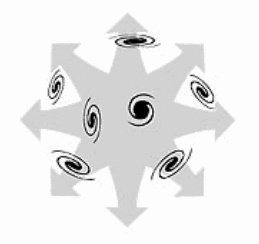
You may not feel it, but the way we do and share science is transforming. The Internet, increased computing power, and the profusion of “big data” are making it more efficient for scientists to do research in a collaborative way. From open-access publication to citizen science, from crowdfunding to documentation of negative results and unfunded grant proposals, the universe of “open science” is continuing to grow. And last week’s Open Science Summit explored how the ways in which we engage in open science continue to diversify, as we find new ways in which open science can benefit society.
One of the brightest stars in the open science universe is the accelerating trend of making peer-reviewed research publicly available. What is exciting about open access publication isn’t just what it could mean for people and groups who wouldn’t otherwise have access to such research; it is also what can be learned from systematic analyses of these giant databases of papers. The ability to do “meta-science” is already bringing about new understanding, for example in the gender-based patterns of publication. If you’re curious about open access, UW Libraries is hosting a great exhibition and some discussions as well, coinciding with the Public Library of Science‘s 6th annual Open Access week. Along with this event, PLoS has also launched “HowOpenIsIt?“, a guide to the diverse ways you can publish or access research, along the spectrum of “Open” to “Closed”.
Another purveyor of research findings, Thomson Reuters also announced a new open science-related product: its Data Citation Index, which will allow people to store, use, attribute, and measure the impact of data sets in the context of the research they inform. This could change the speed at which researchers can make new discoveries, and it could change the way funders decide to support research. Open data is complicated, because researchers, research subjects, funders, and even private groups who’ve gathered the data under federal regulations, may feel that they own the data. This creates a challenge for institutions charged with sharing such data, such as NOAA, as it considers restricting access to fisheries data that are gathered by industry (Check out that story to see what SAFS‘ Ray Hilborn thinks about the implications of this possible restriction.)
While private industry is often required to share data on how it uses or manages natural resources, the general public is becoming more interested in voluntarily doing the same. Sharing your observations of weather, sightings of animals, or the timing of flowers in your neighborhood, called citizen science, is a fun way to help scientists and to learn more about your environment. One local option is the Coastal Observation and Seabird Survey Team, or COASST, led by CoEnv’s Julia Parrish. Check out this story to learn more about how your live observations of beaches around the PNW can help us care for our coasts.
The whole process of scientific research–the question-asking, the experimenting, the assessment of data, and the application for decision-making–is becoming more accessible, in more ways, beyond the scientific community. And a growing number of scientists and organizations are embracing this expanding universe.

